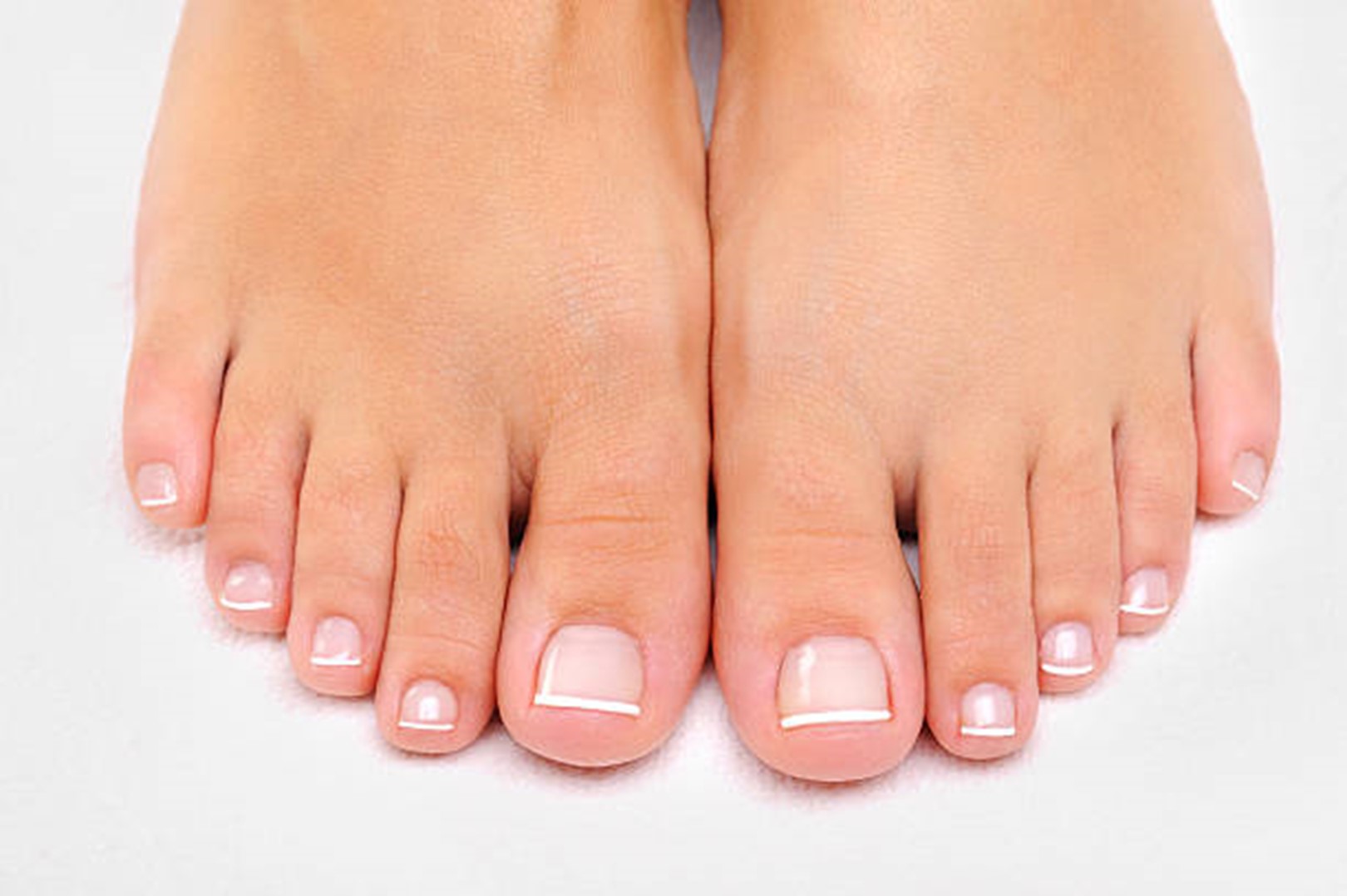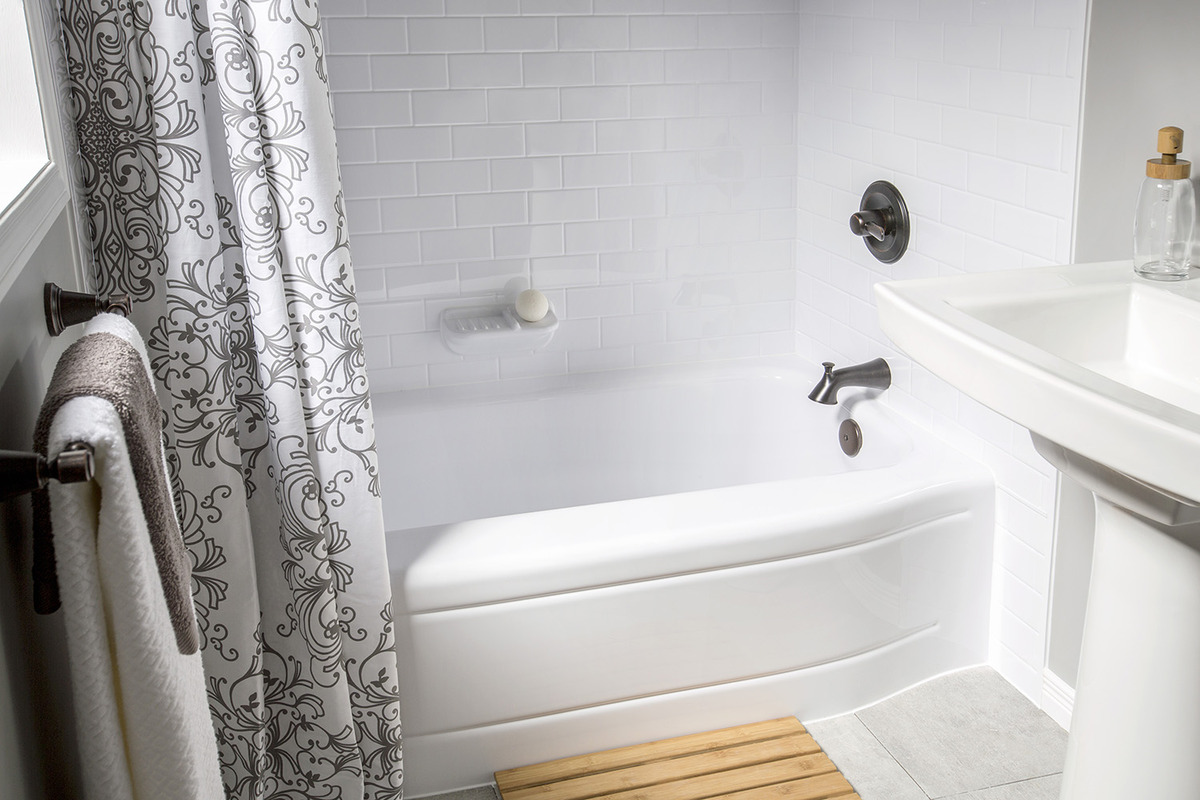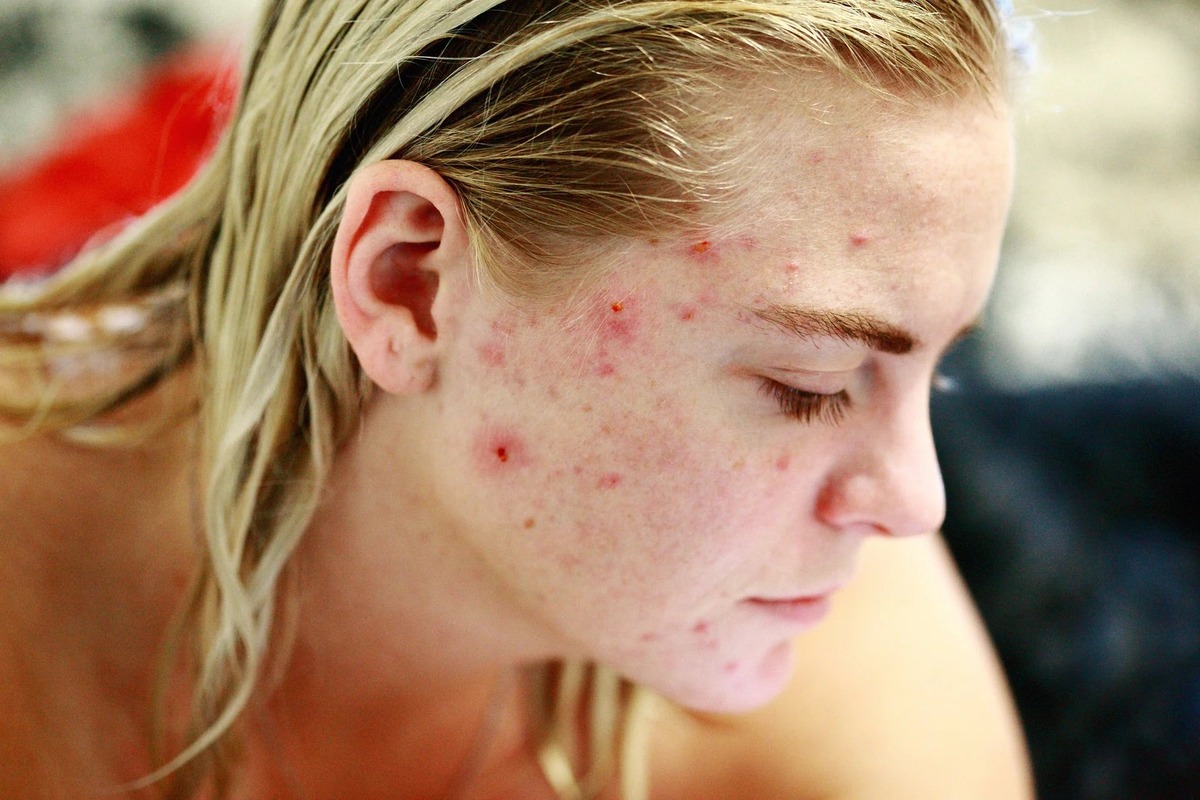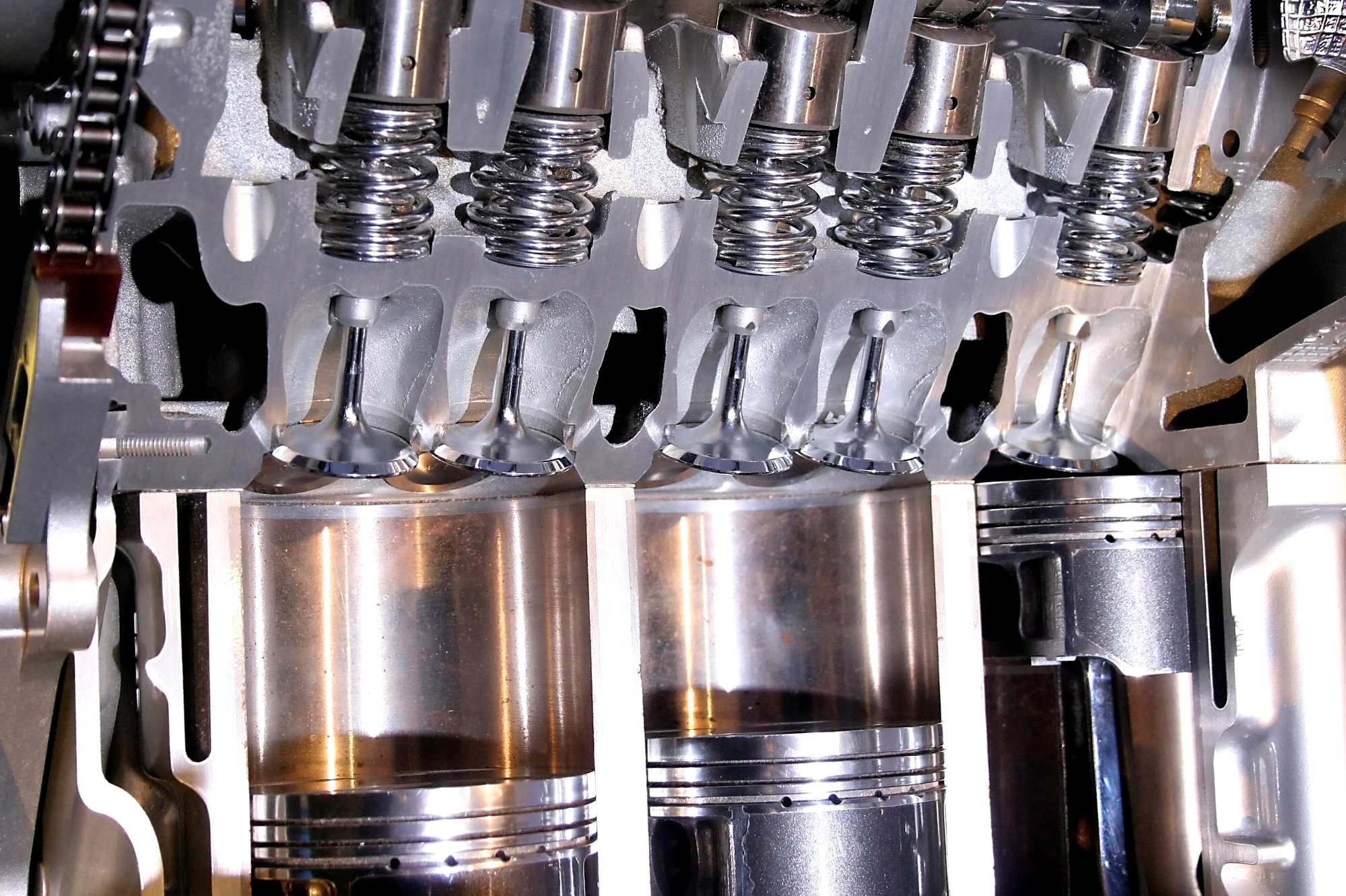Home>Health and Wellness>The Hidden Dangers Of Acrylic Nails On Your Toes: What You Need To Know!


Health and Wellness
The Hidden Dangers Of Acrylic Nails On Your Toes: What You Need To Know!
Modified: February 14, 2024
Discover the hidden health risks of wearing acrylic nails on your toes. Learn what you need to know for your health and wellness.
(Many of the links in this article redirect to a specific reviewed product. Your purchase of these products through affiliate links helps to generate commission for Noodls.com, at no extra cost. Learn more)
Table of Contents
Introduction
Acrylic nails have long been a popular beauty trend, offering individuals the opportunity to achieve glamorous and long-lasting nail enhancements. While acrylic nails are commonly associated with fingernails, they are also utilized on toenails for aesthetic purposes. However, the use of acrylic nails on toes presents hidden dangers that many individuals may not be aware of. Understanding the potential risks and health implications associated with this practice is crucial for making informed decisions about nail care.
In the following sections, we will delve into the world of acrylic nails, exploring their composition, application, and the specific risks they pose when applied to toenails. We will also examine the potential health issues that can arise from wearing acrylic nails on toes and provide valuable insights into proper care practices to mitigate these risks. By shedding light on this often overlooked topic, we aim to empower individuals to prioritize their foot health while still enjoying the beauty benefits of acrylic nails.
What Are Acrylic Nails?
Acrylic nails are a type of artificial nail enhancement that has gained widespread popularity in the realm of beauty and self-care. Composed of a combination of liquid monomer and powder polymer, acrylic nails are meticulously applied to natural nails or nail extensions to create a durable and aesthetically pleasing manicure or pedicure. The process typically involves mixing the liquid monomer with the powder polymer to form a malleable substance that can be shaped and sculpted onto the nails before hardening into a robust, glossy finish.
The application of acrylic nails on toenails follows a similar procedure to that of fingernails, involving the careful layering and shaping of the acrylic mixture to achieve the desired length and style. Once the acrylic has set, it forms a resilient layer that can withstand daily activities and maintain its lustrous appearance for an extended period.
One of the key attractions of acrylic nails is their versatility, as they can be customized in terms of length, shape, and color, allowing individuals to express their unique style preferences. Additionally, acrylic nails are renowned for their durability, making them a popular choice for those seeking long-lasting nail enhancements.
Despite their widespread use and appeal, it is important to recognize that acrylic nails, particularly when applied to toenails, come with inherent risks and considerations that warrant careful attention. Understanding these risks is essential for making informed decisions about nail care and prioritizing the health of the feet and toes.
The Risks of Acrylic Nails on Toes
When it comes to adorning toenails with acrylic nails, it's crucial to be aware of the potential risks and complications that may arise from this practice. While acrylic nails can enhance the aesthetic appeal of toenails, they also pose specific dangers that are often overlooked. Understanding these risks is essential for making informed decisions about nail care and prioritizing the health of the feet and toes.
-
Fungal Infections: The application of acrylic nails on toes can create an environment conducive to fungal growth. The moisture trapped beneath the acrylic layer, particularly in the case of toenails, can provide an ideal breeding ground for fungi, leading to conditions such as athlete's foot or toenail fungus. This risk is amplified in humid or damp environments, making proper ventilation and hygiene essential.
-
Nail Damage: The process of applying and removing acrylic nails can cause significant damage to the natural nails, including the toenails. Excessive filing and buffing during the application process can weaken the nail bed, making it more susceptible to breakage and damage. Moreover, the removal of acrylic nails, if not performed carefully, can result in the thinning and weakening of the natural toenails.
-
Allergic Reactions: Some individuals may experience allergic reactions to the chemicals present in acrylic nail products. This is particularly concerning when applied to toenails, as prolonged exposure to allergens can lead to persistent discomfort and skin irritation. It is important to be mindful of any signs of allergic reactions and seek professional guidance if such symptoms arise.
-
Restricted Blood Circulation: The application of thick acrylic layers on toenails can exert pressure on the nail bed, potentially impeding proper blood circulation to the toes. This can result in discomfort, numbness, or a tingling sensation, indicating compromised circulation. Properly fitted and appropriately sized acrylic nails are essential to mitigate this risk.
-
Difficulty in Detecting Foot Issues: Acrylic nails on toes can hinder the ability to visually inspect the toenails and surrounding skin for signs of potential foot problems. This limitation may delay the identification and treatment of issues such as ingrown toenails, infections, or other abnormalities, compromising overall foot health.
Understanding these risks underscores the importance of approaching the application and maintenance of acrylic nails on toes with caution and mindfulness. By being cognizant of these potential complications, individuals can take proactive measures to mitigate the risks and prioritize the health and well-being of their feet. Proper care practices and regular monitoring are essential to minimize the adverse effects associated with acrylic nails on toes, allowing individuals to enjoy their aesthetic benefits while safeguarding foot health.
Potential Health Issues
The application of acrylic nails on toes introduces a range of potential health issues that merit careful consideration. While the aesthetic appeal of enhanced toenails is undeniable, it is crucial to acknowledge the implications for foot health and well-being. By understanding and addressing these potential health issues, individuals can make informed decisions about nail care and take proactive steps to safeguard the health of their toes.
Fungal Infections
One of the primary health concerns associated with acrylic nails on toes is the heightened risk of fungal infections. The environment created beneath the acrylic layer, particularly in the case of toenails, can trap moisture and provide an ideal breeding ground for fungi. This can lead to the development of conditions such as athlete's foot or toenail fungus, characterized by discomfort, discoloration, and potential complications. Proper ventilation and diligent hygiene practices are essential to mitigate this risk and prevent the onset of fungal infections.
Nail Damage
The process of applying and maintaining acrylic nails on toes can contribute to significant nail damage. Excessive filing, buffing, and the use of harsh chemicals during the application process can weaken the natural nail bed, making it more prone to breakage and damage. Furthermore, the removal of acrylic nails, if not performed with care, can lead to thinning and weakening of the natural toenails. This susceptibility to damage underscores the importance of gentle nail care practices and periodic breaks from acrylic nail usage to allow the natural nails to recover and strengthen.
Allergic Reactions
Some individuals may experience allergic reactions to the chemicals present in acrylic nail products, posing a significant health concern when applied to toenails. Prolonged exposure to allergens can result in persistent discomfort, skin irritation, and potentially severe allergic reactions. It is imperative to remain vigilant for any signs of allergic responses and seek professional guidance if such symptoms manifest. Additionally, opting for hypoallergenic nail products and conducting patch tests can help mitigate the risk of allergic reactions.
Restricted Blood Circulation
The application of thick acrylic layers on toenails can exert pressure on the nail bed, potentially impeding proper blood circulation to the toes. This can lead to discomfort, numbness, or a tingling sensation, indicating compromised circulation. To mitigate this risk, it is essential to ensure that acrylic nails are properly fitted and appropriately sized, allowing for comfortable wear without exerting undue pressure on the nail bed.
Difficulty in Detecting Foot Issues
Acrylic nails on toes can hinder the visual inspection of the toenails and surrounding skin, impeding the early detection of potential foot issues. This limitation may delay the identification and treatment of conditions such as ingrown toenails, infections, or other abnormalities, compromising overall foot health. Regular monitoring and proactive foot care practices are crucial to overcome this challenge and ensure the timely detection and management of potential foot issues.
By acknowledging and addressing these potential health issues, individuals can approach the use of acrylic nails on toes with a heightened awareness of the associated risks. Prioritizing foot health through diligent care, regular monitoring, and mindful decision-making can help mitigate these risks and preserve the well-being of the feet and toes. It is essential to strike a balance between aesthetic preferences and health considerations, ensuring that nail care practices support overall foot health and comfort.
Proper Care for Acrylic Nails on Toes
Proper care for acrylic nails on toes is essential to mitigate the potential risks and maintain the health and well-being of the feet. By implementing diligent care practices and adhering to specific guidelines, individuals can enjoy the aesthetic benefits of acrylic nails while minimizing the associated health concerns.
Hygiene and Ventilation
Maintaining meticulous hygiene is paramount when it comes to caring for acrylic nails on toes. Regularly cleaning and drying the toenails, particularly beneath the acrylic layer, can help prevent the accumulation of moisture and reduce the risk of fungal infections. Additionally, ensuring adequate ventilation around the toes, especially when wearing closed-toe footwear, can help minimize the moisture buildup that contributes to fungal growth.
Gentle Maintenance
Adopting gentle maintenance practices is crucial for preserving the integrity of both the acrylic nails and the natural toenails. Avoiding excessive filing and buffing, especially near the cuticle area, can prevent unnecessary damage to the nail bed. When shaping or refining the acrylic nails, using gentle, controlled motions can help maintain the strength and resilience of both the artificial and natural nails.
Regular Monitoring
Consistent monitoring of the acrylic nails and the underlying toenails is essential for detecting any signs of damage, fungal infection, or allergic reactions. Observing changes in nail color, texture, or sensation can prompt timely intervention and prevent potential complications. Additionally, regular inspections can help identify any discomfort or pressure exerted by the acrylic nails, allowing for adjustments to ensure optimal comfort and circulation.
Professional Maintenance
Seeking professional assistance for the application, maintenance, and removal of acrylic nails on toes can contribute to their long-term health and well-being. Professional nail technicians are adept at applying acrylic nails with precision, minimizing the risk of damage to the natural nails. Moreover, professional removal of acrylic nails, utilizing safe and appropriate techniques, can help prevent undue stress and trauma to the toenails.
Periodic Breaks
Allowing the natural toenails to breathe and recover from the effects of acrylic nail application is crucial for their overall health. Incorporating periodic breaks from wearing acrylic nails can facilitate the restoration of the natural nail bed, reducing the risk of thinning and damage. During these breaks, individuals can focus on nourishing the natural nails with moisturizing treatments and protective coatings to promote their strength and resilience.
Proper Sizing and Fit
Ensuring that the acrylic nails are properly sized and fitted to the natural toenails is essential for preventing discomfort and circulation issues. Ill-fitting acrylic nails can exert undue pressure on the nail bed, leading to discomfort and potential circulation problems. By prioritizing proper sizing and fit, individuals can enhance their comfort and minimize the risk of adverse effects associated with acrylic nails on toes.
By embracing these care practices and integrating them into a comprehensive nail care routine, individuals can enjoy the aesthetic allure of acrylic nails on toes while safeguarding the health and well-being of their feet. Prioritizing hygiene, gentle maintenance, regular monitoring, professional assistance, periodic breaks, and proper sizing can collectively contribute to a harmonious balance between nail aesthetics and foot health. It is through mindful care and informed decision-making that individuals can derive pleasure from acrylic nails while upholding the vitality of their toes.
Conclusion
In conclusion, the allure of acrylic nails on toes is undeniable, offering individuals the opportunity to express their style and enhance the aesthetic appeal of their feet. However, it is imperative to recognize the hidden dangers and potential health implications associated with this practice. From the heightened risk of fungal infections to the potential for nail damage and allergic reactions, the application of acrylic nails on toes requires careful consideration and proactive care.
By shedding light on the risks and complications associated with acrylic nails on toes, this article aims to empower individuals to approach nail care with mindfulness and informed decision-making. The insights shared regarding the potential health issues, including fungal infections, nail damage, allergic reactions, restricted blood circulation, and the challenge of detecting foot issues, underscore the need for a balanced approach that prioritizes foot health alongside aesthetic preferences.
Proper care practices, including meticulous hygiene, gentle maintenance, regular monitoring, professional assistance, periodic breaks, and prioritizing proper sizing and fit, are essential for mitigating the risks and preserving the health and well-being of the toes. By integrating these care practices into a comprehensive nail care routine, individuals can enjoy the beauty benefits of acrylic nails while safeguarding the vitality of their feet.
It is crucial for individuals to recognize that nail care extends beyond cosmetic enhancements, encompassing the preservation of foot health and comfort. By embracing a holistic approach to nail care, individuals can strike a harmonious balance between aesthetic preferences and health considerations, ensuring that their toes remain vibrant and healthy.
Ultimately, the decision to adorn toenails with acrylic nails should be accompanied by a commitment to diligent care and a proactive mindset. By staying attuned to the needs of their feet and incorporating mindful care practices, individuals can revel in the beauty of acrylic nails while nurturing the well-being of their toes. It is through this conscientious approach that individuals can derive pleasure from nail enhancements while upholding the vitality and health of their feet.












